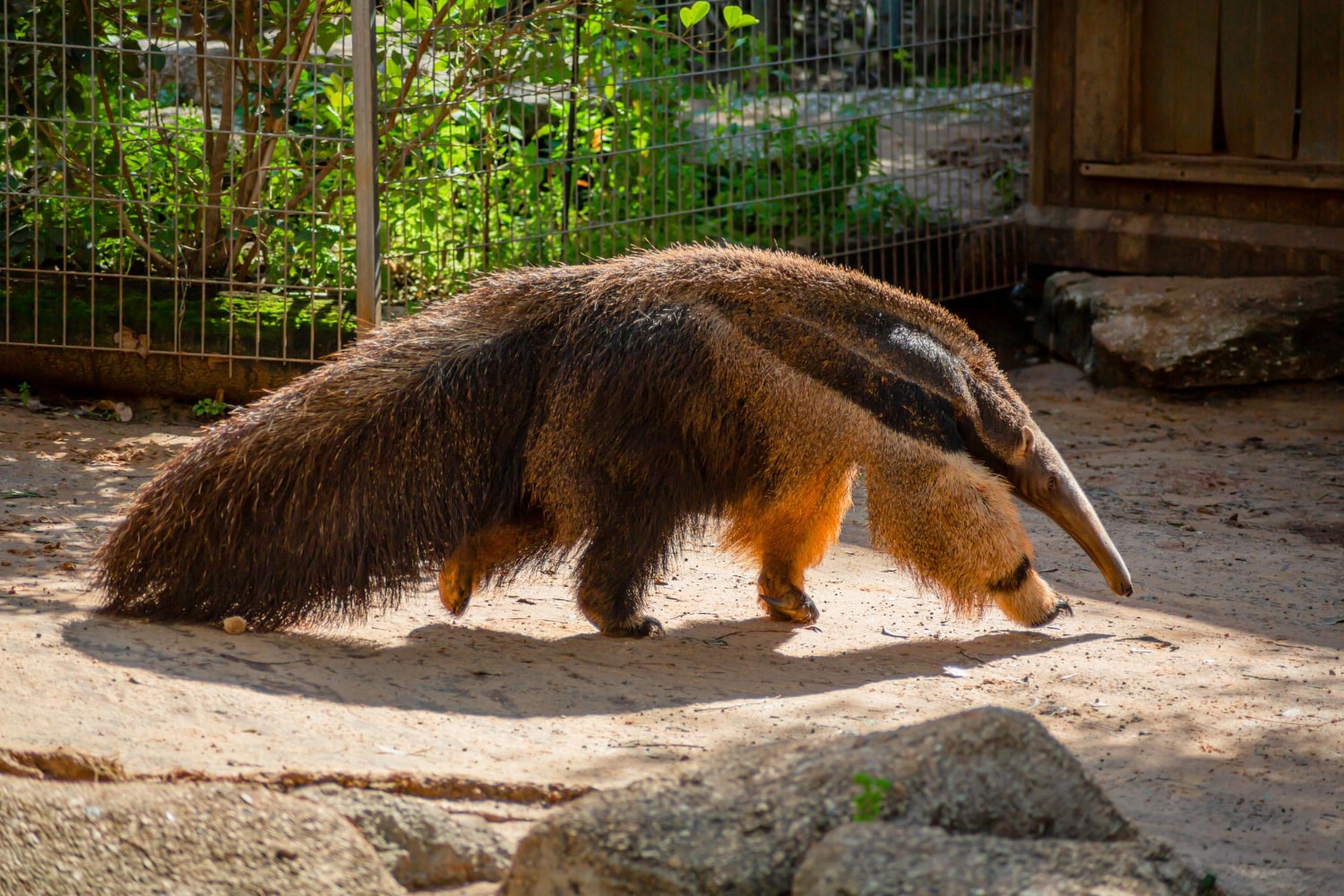Anteaters are among the most fascinating animals of the wild. They are known for their unusual appearance, long snouts, and unique feeding habits. These creatures live in Central and South America and play an important role in natural ecosystems. Their behavior, physiology, and way of life contain mysteries that surprise even experienced zoologists. Below you will find interesting facts about anteaters that will help you discover this remarkable world.
- Anteaters belong to a separate order of xenarthrans, which also includes sloths. They have no teeth, so their diet is completely adapted to eating soft food. Their main tool is a long sticky tongue. Thanks to it, they can consume large amounts of insects quickly.
- There are four main species of anteaters in the world. These are the giant anteater, the tamandua, the southern tamandua, and the silky anteater. Each has its own traits, size, and habitat range. The largest species can reach up to two meters in length including the tail.
- The giant anteater is known for its thick and long fur. Its tail is so fluffy that the animal can cover itself with it to protect against cold or rain. The tail also serves as camouflage when the anteater rests in the grass. This adaptation allows it to blend with the environment.
- The silky anteater weighs only about 400 grams and lives mainly in trees. Its body is covered with golden fur that gives it a decorative appearance. It feeds on small insects and rarely descends to the ground. This species is considered the least studied among anteaters.
- The anteater’s tongue can reach up to 60 centimeters in length. It is coated with sticky saliva and equipped with tiny hook-shaped papillae that help capture ants and termites. An anteater can extend and retract its tongue up to 150 times per minute. This makes it a true master of rapid feeding.
- Anteaters can eat up to 30,000 insects in a single day. They easily break into anthills or termite mounds with their powerful claws. However, they do not destroy the colony completely, leaving it capable of recovery. This behavior helps maintain balance in nature.
- The claws of anteaters are so sharp and long that they can become dangerous weapons. When threatened, the animal stands on its hind legs and defends itself with its front claws. In this stance it resembles a boxer. Even large predators such as jaguars can suffer serious injuries.
- Anteaters have very poor eyesight and hearing, but their sense of smell is extremely well developed. They can detect the scent of insects from dozens of meters away. This ability helps them locate hidden termite colonies underground or in decaying wood. Such sensitivity compensates for their weaker senses.
- Unlike many mammals, anteaters do not produce stomach acids to digest food. They swallow insects along with sand and soil, which help grind the prey inside the stomach. This is a natural mechanism that replaces teeth. In this way, the animal efficiently absorbs nutrients.
- Giant anteaters live mostly on the ground. They move slowly and often appear clumsy. However, they are excellent swimmers and can even cross rivers. Their long snouts help them breathe while swimming.
- Tamanduas, unlike giant anteaters, spend much of their time in trees. They have prehensile tails that allow them to grasp branches. Their fur is shorter but very dense, providing protection from insect bites. This lifestyle makes them more flexible in choosing habitats.
- Silky anteaters are nocturnal animals. They avoid daylight and lead a secretive life. They can be found only in the tropical forests of South America. Because of their small numbers, they remain the least visible of their relatives.
- Anteaters give birth to only one offspring per year. The young is born covered in fur and immediately clings to its mother’s back. It may stay there for several months until it becomes strong enough. This way of raising young ensures safety and protection.
- A notable trait of anteaters is their ability to control body temperature. It is lower than that of most mammals and is about 32 degrees Celsius. This is connected with their low-calorie diet. Such a feature helps them conserve energy.
- In the wild, anteaters have few natural enemies apart from large predators. Their main strategy is to avoid danger and rarely engage in open conflicts. When attacked, they quickly retreat into thick vegetation or water. This helps them survive in the challenging conditions of the tropics.
- Despite their strange appearance, anteaters play an important role in ecosystems. They regulate the population of insects that could otherwise damage forests and plantations. Their activity helps maintain natural balance. Without anteaters some regions would suffer from overpopulation of termites and ants.
- In captivity, anteaters require special conditions. Their diet must include specially prepared mixtures resembling their natural food. They cannot tolerate cold climates well, so they can only be kept in zoos with proper infrastructure. This makes them rare exhibits worldwide.
Anteaters are truly remarkable creatures that combine unique physiological traits with important ecological functions. They prove that even the most unusual animals can be of great significance to nature. These fascinating facts offer a new perspective on the world of wild fauna. You might not know that such creatures play a key role in preserving balance in tropical forests.





